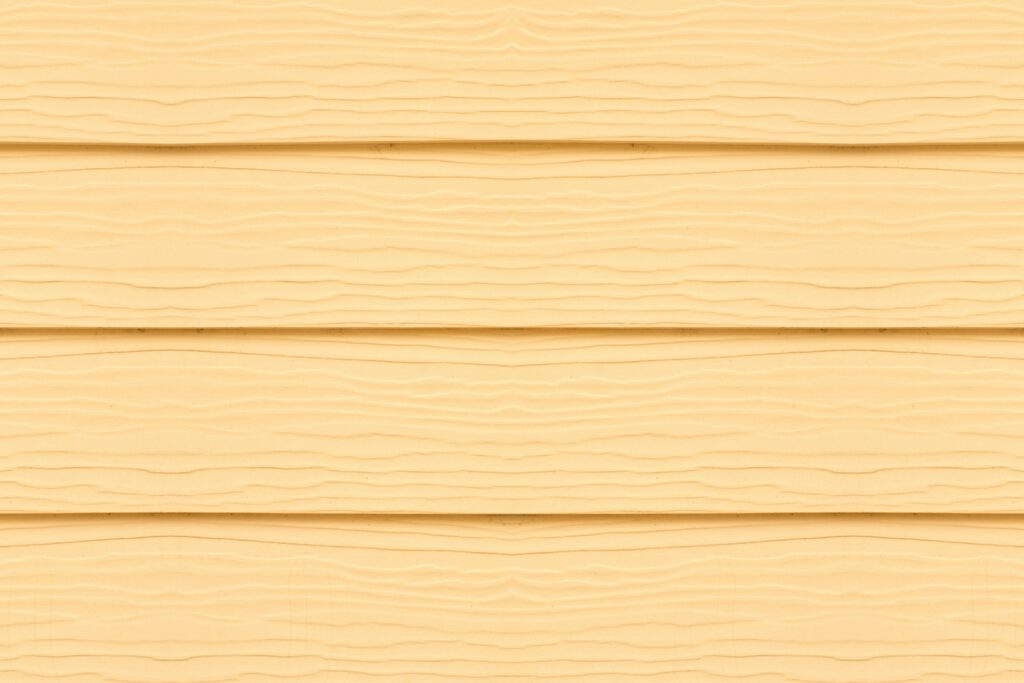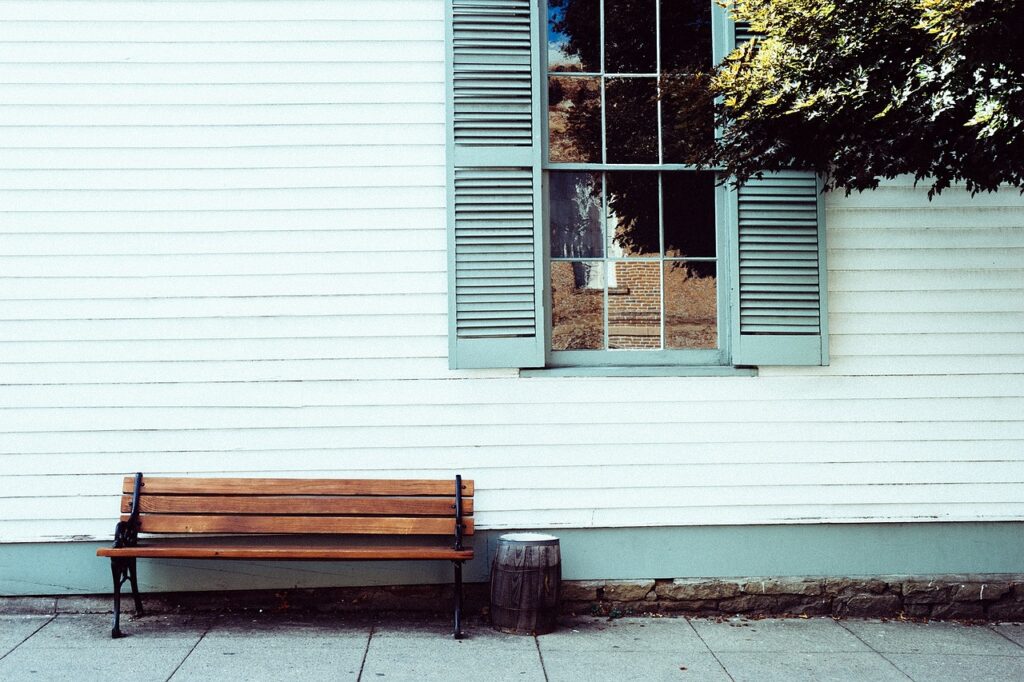
Image Source: Dreamstime.com
Cracked siding is a common issue that homeowners face, primarily due to the natural wear and tear that occurs over time. Siding serves as a protective layer for homes, shielding them from weather elements like rain, wind, and extreme temperatures. When this outer layer becomes compromised, it can lead to significant structural and aesthetic problems.
The presence of cracks not only affects the visual appeal of a home but can also allow moisture to seep in, potentially leading to mold growth or wood rot. It’s essential to understand the nature of cracked siding to address the issue promptly and effectively. Knowing the signs can prevent minor damages from escalating into more severe and costly repairs.
Awareness is the first step in tackling any home maintenance issue. By familiarizing themselves with the causes and consequences of cracked siding, homeowners can take proactive measures to ensure their siding remains intact and functional, preserving the beauty and integrity of their homes.
Common Causes of Cracked Siding
Several factors contribute to the development of cracks in house siding. One of the primary causes is weather-related stress. Extreme temperatures can cause siding materials to expand and contract, leading to cracks over time. Additionally, exposure to intense sunlight can cause some materials to become brittle and more susceptible to cracking.
Another common cause is physical impact. Siding can be damaged by objects such as lawn equipment, sports gear, or even hail. This type of damage is usually localized but can weaken the structure and lead to further cracking if not addressed. Furthermore, improper installation or poor-quality materials can also result in premature cracking and deterioration.
Lastly, age is a significant factor. As siding materials age, they naturally lose their resilience and structural integrity. Regular maintenance and timely repairs can mitigate age-related issues, but eventually, replacement might be necessary to ensure continued protection and aesthetic appeal.
Why Repairing Cracked Siding is Important
Repairing cracked siding is crucial for maintaining the overall health and appearance of a home. Cracks can allow water and moisture to penetrate the siding, leading to issues such as mold, mildew, and wood rot. These problems not only compromise the structural integrity of a home but can also pose health risks to its occupants.
In addition to preventing moisture-related damage, repairing cracked siding helps maintain the home’s curb appeal. A home with visibly damaged siding can lose value and may not make the best impression on visitors or potential buyers. Keeping the siding in good condition ensures that the property remains attractive and retains its market value.
Furthermore, addressing siding cracks promptly can save homeowners money in the long run. Minor repairs are typically less expensive than dealing with extensive water damage or replacing entire sections of siding. By investing in regular inspections and maintenance, homeowners can prevent small issues from becoming costly repairs.
Identifying Different Types of House Siding
House siding comes in various materials, each with its unique properties and susceptibility to cracking. Understanding the type of siding on a home is essential for identifying and addressing cracks effectively. Common siding materials include vinyl, wood, fiber cement, and aluminum.
- Vinyl Siding: Known for its affordability and low maintenance, vinyl siding is popular among homeowners. However, it’s prone to cracking in extreme temperatures and under physical stress.
- Wood Siding: Offers a classic aesthetic but requires regular maintenance to prevent moisture damage and cracking. Wood siding can be susceptible to termites and wood rot if not properly cared for.
- Fiber Cement Siding: Durable and resistant to fire, this type of siding is less likely to crack but can suffer damage from physical impacts.
- Aluminum Siding: Lightweight and rust-resistant, aluminum siding is durable but can dent easily, leading to surface cracks.
Each type of siding requires specific repair techniques and materials, making it crucial for homeowners to accurately identify their siding material before attempting any repairs.
How to Inspect Your House Siding for Cracks
Regular inspections are vital to maintaining the integrity of house siding. Homeowners should conduct thorough checks at least twice a year, ideally in spring and fall, to identify any potential issues early. During inspections, it’s essential to examine the siding for visible cracks, warping, or discoloration.
Begin by walking around the exterior of the home, looking closely at the siding’s surface. Pay special attention to areas around windows and doors, as these are common spots for cracks to develop. Use a flashlight to inspect shaded areas and ensure no cracks are missed.
In addition to visual inspections, homeowners can gently press on the siding to check for any unusual softness or give. This can indicate underlying water damage or compromised structural integrity. Document any findings and prioritize repairs based on the severity of the damage.
Tools and Materials Needed for Siding Repair
Having the right tools and materials is essential for effective siding repair. Depending on the type of siding and the extent of the damage, the necessary items may vary. However, some basic tools and materials are common across most siding repair projects.
Essential Tools:
- Safety goggles and gloves
- Utility knife
- Pry bar
- Hammer
- Caulking gun
- Tape measure
Materials:
- Replacement siding panels or patches
- Nails or screws (specific to siding material)
- Exterior-grade caulk
- Paint or stain (for wood siding)
Equipping oneself with these tools and materials ensures that homeowners can efficiently tackle siding repair projects, whether they choose to do it themselves or hire a professional.
Step-by-Step Guide to Repairing Cracked Siding
Repairing cracked siding involves a series of steps that vary slightly depending on the siding material. Below is a general guide to repairing vinyl siding, one of the most common types.
Step 1: Assess the Damage
- Identify the extent of the crack and determine whether a patch or full panel replacement is required.
Step 2: Remove the Damaged Siding
- Carefully use a pry bar to remove nails or screws securing the damaged siding.
- Slide the siding piece out, taking care not to damage surrounding panels.
Step 3: Cut and Install Replacement Siding
- Measure and cut the replacement siding piece to fit the gap.
- Secure the new siding using nails or screws, ensuring it aligns with existing panels.
Step 4: Seal the Edges
- Apply exterior-grade caulk to seal the edges of the new siding piece, preventing moisture infiltration.
Step 5: Paint or Stain (If Needed)
- For wood siding, apply paint or stain to match the existing siding.
Following these steps can restore the siding’s appearance and functionality, protecting the home from further damage.
DIY vs. Professional Siding Repair: Pros and Cons
Homeowners often face the decision between attempting a DIY repair or hiring a professional. Both options have their advantages and drawbacks, which should be considered before proceeding.
DIY Repair
Pros:
- Cost-effective as labor costs are eliminated.
- Provides a sense of accomplishment and learning.
Cons:
- Requires time, effort, and a certain level of skill.
- Potential for improper installation, leading to further damage.
Professional Repair
Pros:
- Ensures high-quality workmanship and materials.
- Saves time and reduces the risk of mistakes.
Cons:
- Higher cost due to labor charges.
- Less control over the repair process.
Ultimately, the choice between DIY and professional repair depends on the homeowner’s budget, skill level, and comfort with handling home improvement projects.
Preventative Measures to Avoid Future Siding Cracks
Preventing future cracks in house siding involves regular maintenance and a few proactive strategies. By taking these measures, homeowners can extend the lifespan of their siding and reduce the need for repairs.
- Regular Cleaning: Clean siding annually to remove dirt, mold, and mildew. A simple solution of water and mild detergent is usually sufficient.
- Inspect and Repair: Conduct bi-annual inspections and address minor issues promptly to prevent them from worsening.
- Quality Materials: Invest in high-quality siding materials and ensure proper installation to reduce susceptibility to cracking.
- Protective Measures: Use landscaping and design features to shield siding from direct sunlight and physical impact.
Implementing these strategies can help maintain the siding’s appearance and functionality, protecting the home from potential damage.
Conclusion and Final Tips

In conclusion, identifying and repairing cracked siding is a critical aspect of home maintenance that ensures the home’s beauty and structural integrity. By understanding the causes of cracked siding and taking proactive measures, homeowners can prevent extensive damage and costly repairs.
Regular inspections and maintenance, coupled with quality materials and professional installation, can significantly reduce the likelihood of siding cracks. Whether homeowners choose to tackle repairs themselves or hire professionals, addressing issues promptly is key to preserving their property’s value and appearance.
For those considering siding repairs, it’s essential to weigh the pros and cons of DIY versus professional services. Ultimately, the right choice will depend on individual circumstances, including budget, time, and skill level.
Frequently Asked Questions
1. Can I repair cracked vinyl siding myself?
Yes, homeowners can repair cracked vinyl siding themselves with the right tools and materials. However, it’s important to follow proper procedures to ensure a successful repair.
2. How often should I inspect my house siding?
It’s recommended to inspect house siding at least twice a year, ideally in spring and fall, to identify and address any issues promptly.
3. What is the cost of hiring a professional for siding repair?
The cost of professional siding repair varies depending on the extent of the damage and the type of siding. It’s best to obtain quotes from multiple contractors to ensure a fair price.
4. Is it better to replace or repair cracked siding?
The decision to replace or repair cracked siding depends on the extent of the damage. Minor cracks can often be repaired, while extensive damage may require replacement.
5. How can I prevent future siding cracks?
Prevent future siding cracks by conducting regular inspections, using quality materials, and addressing minor issues promptly. Additionally, protect siding from physical impact and extreme weather conditions.
For further assistance or to schedule an inspection with a professional, consider reaching out to a local siding expert. Protect your home and investment by maintaining the integrity of your siding today.
